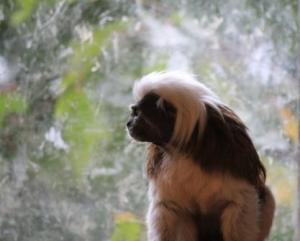Background

Many species held in zoos are threatened to some degree and are therefore kept in captivity for conservation purposes. But since the wild is hard to mimic, the captive environments are often different from the natural habitat. In the absence of predators, behaviors can become altered or even lost. Altering of anti-predator behaviors when predation is absent has been confirmed in several different studies, both from wild species isolated from predators and also from captive species.
When it comes to conservation of animals, a relaxed selection is not desirable. If the individuals held in captivity or their descendants are planned to be released back into the wild, many behaviors necessary for their survival in the wild might have been degraded. This makes interventions to maintain these anti-predator behaviors behaviors in the captive environment necessary for conserving animals in captivity.
The zoo community has a long history of using different environmental enrichments to ensure good welfare in their animals, both physically and mentally. But enrichments that deal with species appropriate behaviors of prey animals are very few. Parken Zoo is one of the first instituations that allocate research towards this field and this master's thesis was the their first project with this particular aim. Two different highly threatened tamarin species belonging to the family Callitrichidae held at Parken Zoo in Eskilstuna were used in this study, the Brazilian bare-faced tamarin and the cotton-headed tamarin.
Aim: To evaluate effectiveness of using two predator models in inducing anti-predator behaviors within these two tamarin groups
Responsible for this page:
Director of undergraduate studies Biology
Last updated:
05/07/13
